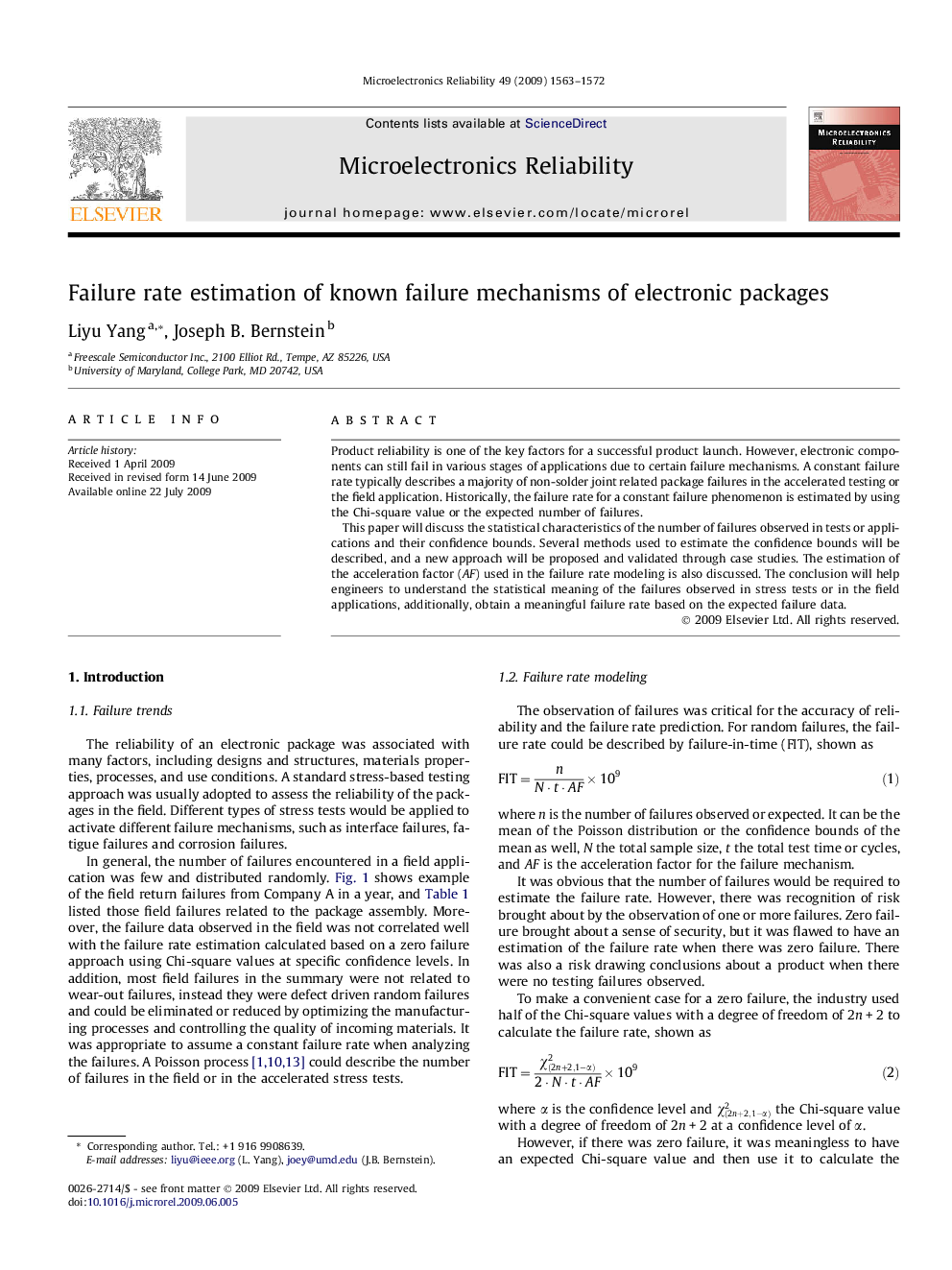| Article ID | Journal | Published Year | Pages | File Type |
|---|---|---|---|---|
| 549584 | Microelectronics Reliability | 2009 | 10 Pages |
Product reliability is one of the key factors for a successful product launch. However, electronic components can still fail in various stages of applications due to certain failure mechanisms. A constant failure rate typically describes a majority of non-solder joint related package failures in the accelerated testing or the field application. Historically, the failure rate for a constant failure phenomenon is estimated by using the Chi-square value or the expected number of failures.This paper will discuss the statistical characteristics of the number of failures observed in tests or applications and their confidence bounds. Several methods used to estimate the confidence bounds will be described, and a new approach will be proposed and validated through case studies. The estimation of the acceleration factor (AF) used in the failure rate modeling is also discussed. The conclusion will help engineers to understand the statistical meaning of the failures observed in stress tests or in the field applications, additionally, obtain a meaningful failure rate based on the expected failure data.
